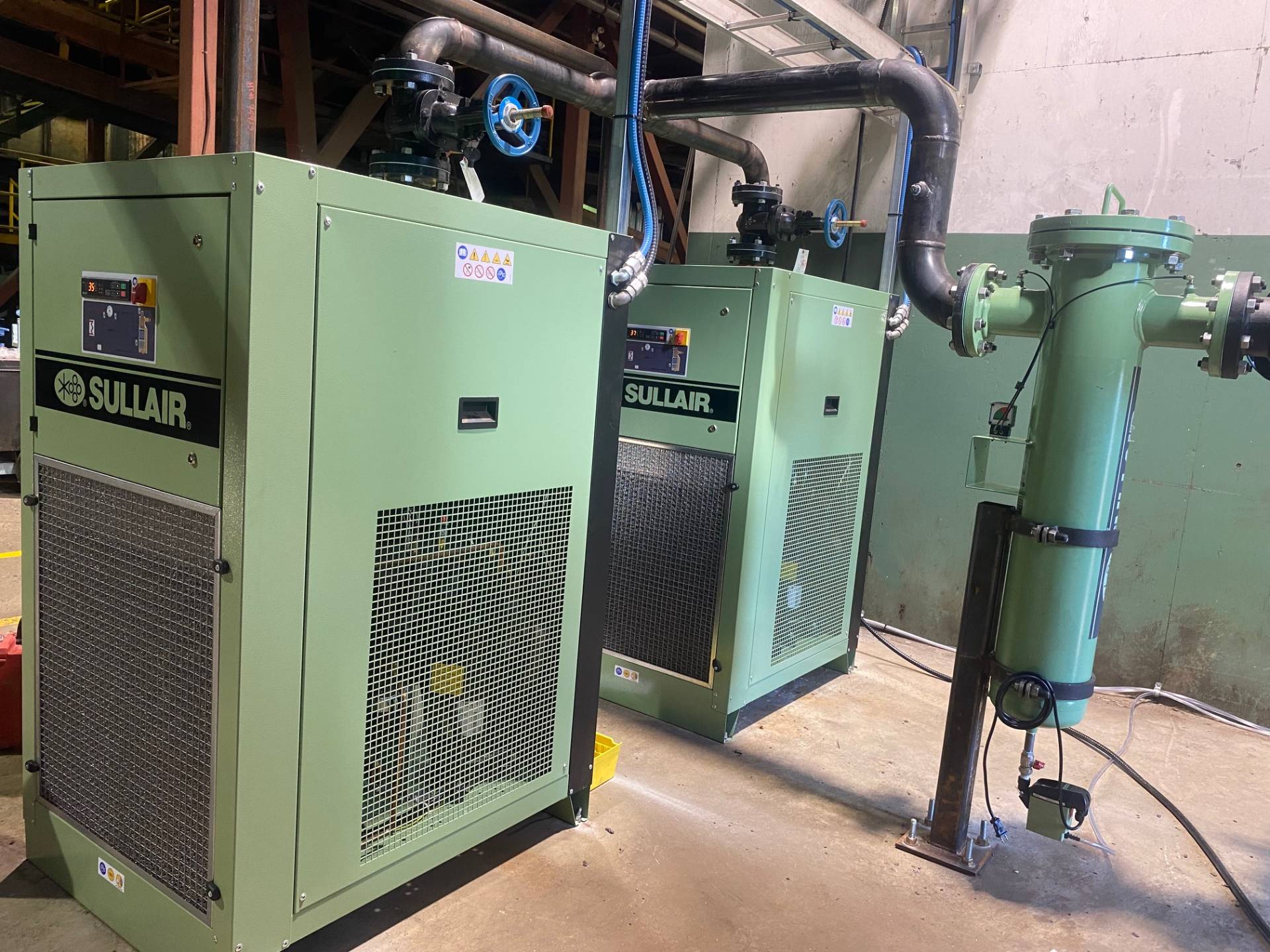When evaluating air compressors for industrial use, understanding efficiency metrics can be confusing.
You might hear terms like “volumetric efficiency” and “specific power” thrown around, but which ones actually matter when evaluating the performance of a compressor?
What Is the Volumetric Efficiency of a Compressor?
Volumetric efficiency measures how effectively a compressor fills its compression chamber with air during each cycle. Technically, it’s defined as:
Volumetric Efficiency = Actual Volume of Air Delivered ÷ Theoretical Swept Volume
This ratio indicates the portion of the cylinder’s theoretical capacity that is effectively used to draw in free air under standard conditions.
Volumetric efficiency is especially relevant to piston compressors, also known as reciprocating compressors, where mechanical wear, such as worn piston rings or valves, causes compressed air to leak back, reducing the amount of air drawn in and compressed.
Over time, this internal leakage reduces volumetric efficiency and indicates when maintenance or part replacement is needed.
What is Free Air Delivery?
Most industrial and municipal operations use rotary screw compressors, where volumetric efficiency is less commonly discussed because their design minimizes internal leakage and maintains more consistent air intake compared to piston compressors.
Instead, rotary screw compressors emphasize Free Air Delivery (FAD), which is the actual volume of compressed air delivered at standardized conditions.
A well-maintained rotary screw compressor should consistently deliver its rated FAD throughout its lifespan.
For example, a 100 CFM-rated unit will maintain that output for decades with proper care, and without the gradual capacity loss typical of piston compressors.
This consistency is vital for industries where a reliable, continuous air supply is critical for production and uptime.
What Is Specific Power of an Air Compressor?
Specific power measures the energy consumed to produce a unit of compressed air, usually expressed in kilowatts per 100 CFM (kW/100 CFM).
Specific Power = Input Power ÷ Free Air Delivery (FAD)
A lower specific power means better energy efficiency, which directly reduces electricity costs, often the largest component of a compressor’s total lifecycle cost.
For facilities running compressors 24/7, including mining sites or water treatment plants, even small improvements in specific power can translate into significant annual savings.

Volumetric Efficiency versus Specific Power
Both volumetric efficiency and specific power offer valuable insights, but for most industrial and municipal applications, specific power is the more practical benchmark.
While volumetric efficiency is useful for diagnosing wear in piston compressors, specific power tells you how much energy your system consumes to produce usable air, directly impacting operating costs and long-term savings.
If energy efficiency and cost-effectiveness are your priorities, specific power should be your primary focus.
How Control Methods Impact Specific Power
Specific power varies based on compressor control technology and operating conditions.
Understanding these differences is crucial for optimizing efficiency:
- Load/No-Load Control: The compressor operates at full capacity or idles without producing air. Power consumption remains high during no-load periods, reducing overall efficiency.
- Inlet Modulation: This method throttles air intake to reduce output, but power usage does not decrease proportionally, resulting in poor part-load efficiency.
- Variable Displacement: Internal compression is adjusted to better match air demand, offering improved efficiency compared to basic modulation.
- Variable Frequency Drive (VFD): Motor speed is adjusted in real time to align with air demand, providing the highest efficiency for facilities with fluctuating usage patterns.
Using CAGI Data for Accurate Efficiency Comparisons
To make informed decisions about compressor selection and efficiency, it’s important to evaluate performance data from the Compressed Air and Gas Institute (CAGI).
CAGI’s standardized testing protocols ensure consistent, third-party verified metrics such as FAD, specific power, and power consumption across manufacturers.
To accurately compare compressor performance, it’s best to look for CAGI sheets that provide:
- Power consumption at various loads
- Free air delivery under standard conditions
- Specific power values across the operating range
- Control method details
This data transparency is essential for ensuring you select equipment that meets your efficiency, performance, and cost expectations.
Choosing the Right Compressor for Your Application
When selecting and maintaining compressors, focusing on specific power rather than volumetric efficiency will give you the most practical insight into energy costs and overall system performance. Optimizing specific power ensures your operations stay cost-effective and reliable over the long term.
With over six decades of experience serving Western Canada’s industrial and municipal markets with reliable compressed air technology, Chamco understands that compressor efficiency is more than just numbers.
Our knowledgeable team will help you select the best equipment to reduce energy costs and ensure reliable operation for your critical applications.
We encourage you to contact us for expert guidance tailored to your needs.